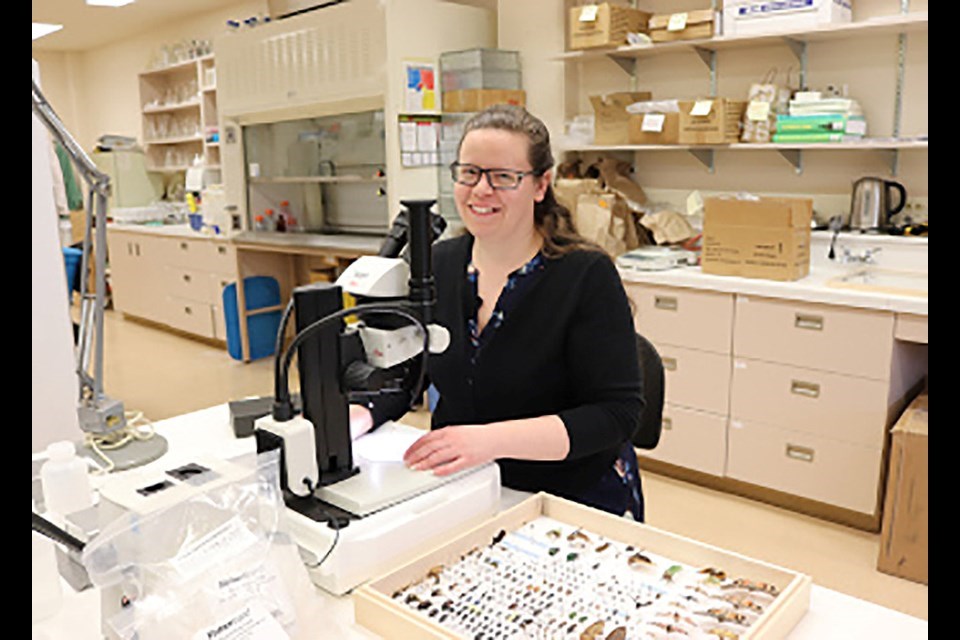Insect pests have always been the plague of farmers, and everyone living on the prairies can attest to that fact. Add global warming to the mix, with warmer summers and milder winters, and the recipe is right for disaster.
Pest insects include grasshoppers, bertha armyworms, diamondback moths, cabbage seedpod weevils and more. None of these are names that farmers want to hear, and nobody wants to see them decimate crops as climate conditions continue to change.
Dr. Meghan Vankosky is on the case.
Dr. Vankosky is a field crop entomologist, and she works at the Saskatoon Research and Development Centre. Here, she leads a team of experts who are working tirelessly to track insect pests and mitigate the risk to farmers.
Know thy enemy
Climate change is a growing concern across the globe as well as here on the prairies.
Crops depend on weather and climate conditions to flourish. If an increased threat of summer droughts and seasonal storms is not enough, insect populations also respond to these same changes.
And with warmer summers and milder winters in the prairies, insects are given an opportunity to expand their reach significantly. Saskatchewan is predicted to see new pests as conditions are favourable for these insects to expand further north.
Insect populations come in two groups: hungry pests (who cause major crop losses) and beneficial bugs (who hunt pests and pollinate plants).
One common example of hungry pests is the flea beetle. These pests target canola crops and are responsible for causing over $300 million in damages every year.
Pest management efforts mean high costs for pesticides and other measures, plus reduced income from reduced crop yields. These measures are expensive and it’s even more expensive to do nothing.
It all boils down to the need to make informed decisions.
Predicting insect behaviours
Dr. Vankosky is able to utilize decades of work carried out by the Prairie Pest Monitoring Network (PPMN) to help with her work.
The PPMN is a network of field crop entomologists established in 1997 to conduct research and monitor insect pest populations across the prairies.
Together with help from farmers, agronomists, researchers, and other experts who have volunteered their time and efforts, the PPMN was able to develop an extensive database of pest insect behaviours.
Additionally, computer modelling is now able to predict when insect pest will be active, and where they are likely to show up in significant numbers.
Beyond this currently available information, Dr. Vankosky and her team strive to develop models that are as accurate as possible to assist farmers.
The bottom line: Dr. Vankosky’s team wants to protect crops and Saskatchewan’s farmers from financial setbacks.
“Our goal is to conduct research that can be used to help farmers and agronomists stay a step ahead of insect pests on the prairies,” Dr. Vankosky stated.
Her team will help develop tools for farmers to better understand pest behaviours and make accurate predictions throughout their growing season. Dr. Vankosky’s work seeks to develop modelling to predict insect pests and their damage potential between 50 and 100 years into the future.
To access the latest information from the PPMN, you can visit their website at prairiepest.ca.




